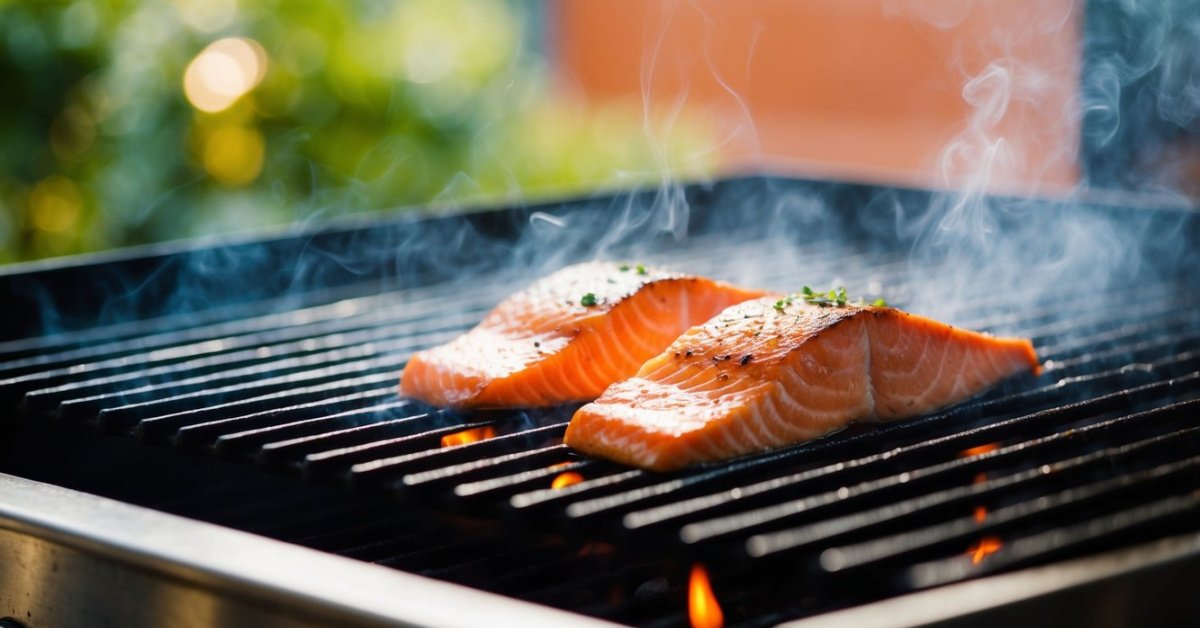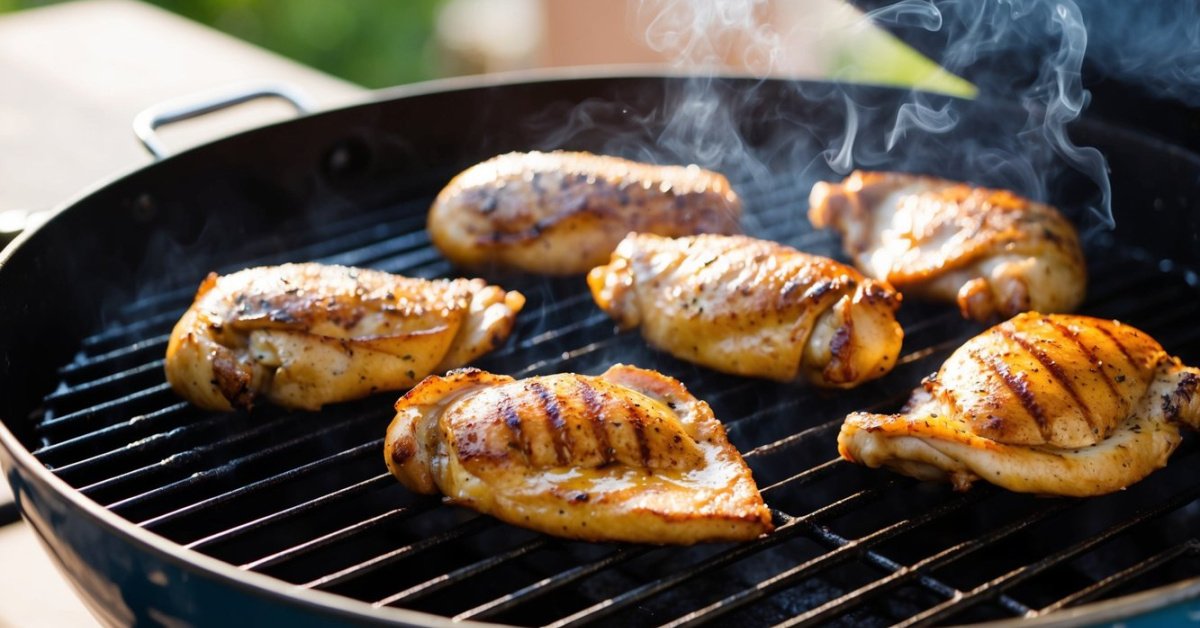Grill Masters 101: Understanding Grill Clearance Requirements for Safe Outdoor Cooking
Hey there, fellow grill masters! As the summer season heats up, it`s time to dust off those grills and get ready for some outdoor cooking. But before you start flipping burgers and searing steaks, it`s important to understand how much clearance your grill needs for safety purposes.

In this article, we`ll cover everything you need to know about grill clearance requirements. From understanding the different types of grills and their respective clearance needs, to measuring and maintaining proper clearance, we`ve got you covered. We`ll also provide some tips for safe grilling and preventing accidents.
If you`re new to grilling or just want to brush up on your safety knowledge, keep reading to learn more!
Understanding grill safety and clearance requirements.
As a seasoned grilling enthusiast, it’s important to understand the safety and clearance requirements when using your grill. Not only can improper use of your grill result in damage to property or injury, but it can also put a damper on the joy of outdoor cooking.
First and foremost, be sure to keep your grill at least 10 feet away from any combustible materials such as buildings or trees. This ensures that any potential sparks or flames won’t ignite nearby structures.
Additionally, make sure you have proper ventilation for your grill. Grilling in an enclosed space such as a garage is not only dangerous but also creates health hazards due to carbon monoxide buildup.
When setting up your grill, ensure that it’s on a stable surface and cannot tip over easily. A level surface is also crucial for even heating distribution across the cooking grate.
It’s essential to clean out grease build-up regularly from inside the firebox and remove ashes after each use. Neglecting these tasks can lead to flare-ups and potentially cause damage or injury.
Finally, always have appropriate fire extinguishing tools readily available when grilling outdoors just in case an emergency arises unexpectedly.
By following these guidelines carefully along with other manufacturer instructions found within their user manuals will help ensure safe operation while enjoying all of those delicious grilled meals this summer!
Types of grills and their respective clearance requirements.
When it comes to grilling, knowing the clearance needs of your grill is crucial for safety and optimal performance. There are different types of grills on the market, and each requires a specific amount of clearance to operate effectively.
Firstly, let’s talk about gas grills. Gas grills typically require at least 24 inches of clearance on all sides for proper ventilation. This helps prevent overheating and reduces the risk of fire hazards.
On the other hand, charcoal grills need more space around them due to their unpredictable heat distribution. At least three feet should be maintained between a charcoal grill and anything flammable such as trees or structures that could ignite from sparks or embers.
Smokers have unique needs when considering clearances because they emit smoke while in use which can affect surrounding areas like windows or doors if placed too close by them; thus requiring at least five feet distance from any nearby walls/windows/doors/etc., along with ample airflow through vents located throughout its structure so as not to build up carbon monoxide levels inside during cooking times.
Lastly, electric smokers need less space than traditional smokers since they don’t produce flames but still require enough room for proper air circulation around their heating elements.
Remember always ensure you check with your manufacturer’s guidelines before setting up any type of grill in your outdoor area!
Factors to consider when determining grill clearance include.
When it comes to grilling, the clearance between your grill and surrounding structures is a crucial factor to consider. Not only does it impact the safety of those around you, but it can also affect the quality of your food.
First and foremost, make sure you check with local building codes for any specific requirements on grill clearance. It’s better to be safe than sorry!
Next, consider the type of grill you have. Gas grills typically require more clearance than charcoal or pellet grills due to their higher heat output and potential for flare-ups.

« how many pounds of brisket per person
how to use pellet grill »
Another important factor is wind direction. Make sure your grill is positioned in an area where smoke won’t blow into nearby homes or buildings. This not only affects air quality but can also lead to complaints from neighbors.
Additionally, think about what materials are surrounding your grill area. Avoid placing a wooden deck or structure too close as they pose a fire hazard if sparks fly out from the grill.
Lastly, don’t forget about overhead clearances! If you’re using a covered patio or gazebo as your outdoor cooking space, make sure there’s enough vertical space above so that smoke doesn’t get trapped inside.
By considering all these factors when determining proper grill clearance distance from structures and surroundings on how much room they need while barbecuing will ensure both safety and delicious results every time!
How to measure and maintain proper grill clearance?
When it comes to grilling, one of the most important things to keep in mind is proper grill clearance. Not only does this ensure that your food cooks evenly, but it also helps prevent any potential safety hazards.
So, how much clearance does a grill actually need? Well, the answer can vary depending on a number of factors. For example, if you’re using a gas grill with an open flame burner system, you’ll likely need at least 10-12 inches of clearance between the top of the burners and any combustible materials (like your wooden deck or nearby trees). On the other hand, if you’re using an electric or infrared grill with no open flames, you may not need as much clearance.
Regardless of what type of grill you have though, there are some general guidelines to follow when measuring and maintaining proper clearance. First off, always check your owner’s manual for specific recommendations from the manufacturer. This will give you a good starting point for determining how much space is needed.
Next up is regular maintenance – even if your initial measurements were correct when setting up your grill initially; over time things can shift around due to wear and tear or natural weather conditions like wind gusts etc., which could affect that distance required between surfaces such as walls/fences/awnings etc.. So be sure to periodically check everything out once every few months during grilling season especially after storms/hurricanes/etc., just in case anything has moved closer together than before!
Lastly – use common sense! If something doesn’t feel right about where/how close certain items are placed near/in front-of/beside/back-to/etc…your bbq setup then go ahead & move them further away regardless what “official” recommendations might say so long as safety precautions (such as fire extinguishers) are kept nearby at all times while cooking/grilling outdoors!
Tips for safe grilling and preventing accidents.
Grilling is a beloved pastime for many, but it’s important to remember that it can also be dangerous if not done correctly. As someone who has been grilling for years, I have learned some valuable tips for ensuring a safe and enjoyable grilling experience.

First and foremost, it’s crucial to have proper clearance around your grill. Make sure there are no overhanging branches or nearby flammable objects that could potentially catch fire. The general rule of thumb is to keep at least 10 feet of clearance on all sides of the grill.
Another important safety tip is to always use long-handled utensils when cooking on the grill. This will help prevent burns from hot surfaces or flames that may flare up unexpectedly.
In addition, never leave your grill unattended while in use. It only takes a moment for an accident to occur, so make sure you stay close by and keep an eye on your food at all times.
Finally, make sure you properly clean and maintain your grill after each use. Grease buildup can pose a serious fire hazard if left unchecked.
By following these simple tips, even those new to grilling can ensure a safe and enjoyable experience every time they fire up their barbecue pit!
Conclusion
Grilling safety is paramount to having an enjoyable grilling experience. Knowing how much clearance your specific grill type needs, understanding the factors that influence this requirement, and measuring and maintaining proper clearance can go a long way in preventing dangerous situations. Follow these easy steps each time you fire up the grill, grab some beers with friends, and enjoy delicious meals off of it! Now get out there and become a masterful outdoor chef!














